SunGlacier
redefining the power of creativity
From Artistic Vision to Global Water Solution
In 2016, SunGlacier presented its first autonomous water-from-air fountain, gaining international recognition. From this moment Peter van Geloven, engineer, joined forces to bring the ideas to life. A 2017 test in Mali’s harsh climate highlighted the need for further innovation in condensation technology.
SunGlacier persevered, developing the patented SunGlacier’s Growing Waterfall Technology. This energy-efficient technology utilizes a unique condensation process, operating without cooling surfaces.
Today, SunGlacier stands as a testament to the power of art to inspire innovation and tackle global challenges. Its potential to provide clean drinking water in even the most arid regions offers a beacon of hope in a water-scarce world.
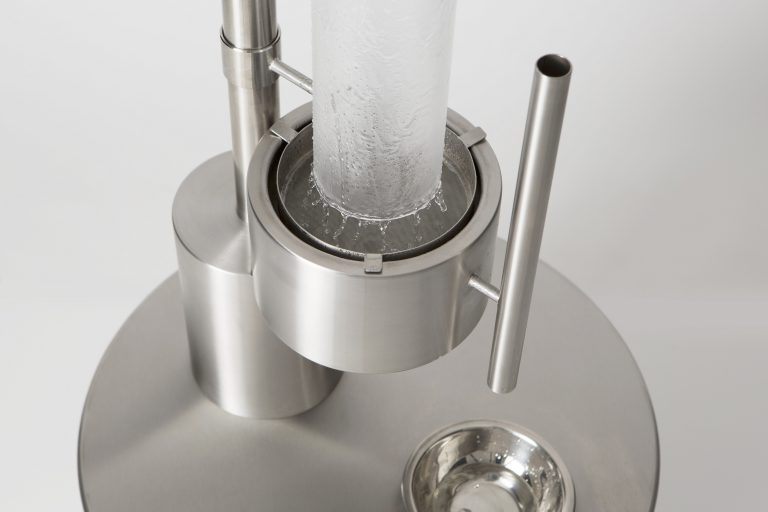
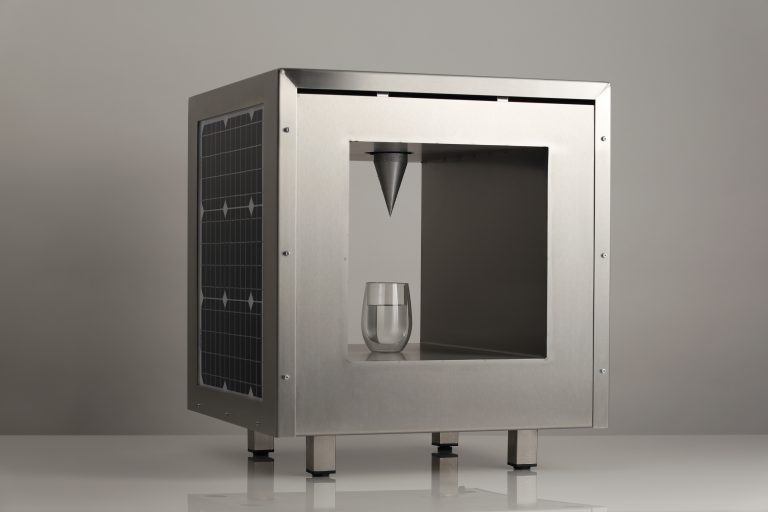
Art meets Science
Art can reach a much larger audience than heavy scientific reports. That is why the SunGlacier project has chosen to present all possible innovations as art or design. A beautiful and unique object that also has to meet many technological requirements is immediately a huge challenge that raises the bar even higher. Despite all this, it has always been possible to package intermediate innovations into appealing objects over the years.
inspire people
For the World Expo Dubai, we unveiled a groundbreaking feat of engineering: a man-made waterfall in the heart of the desert. By harnessing the power of the sun, our pavilion’s rooftop machine extracted water directly from the humid air. Visitors could experience the refreshing sensation of cool, freshly produced water in the scorching desert heat.
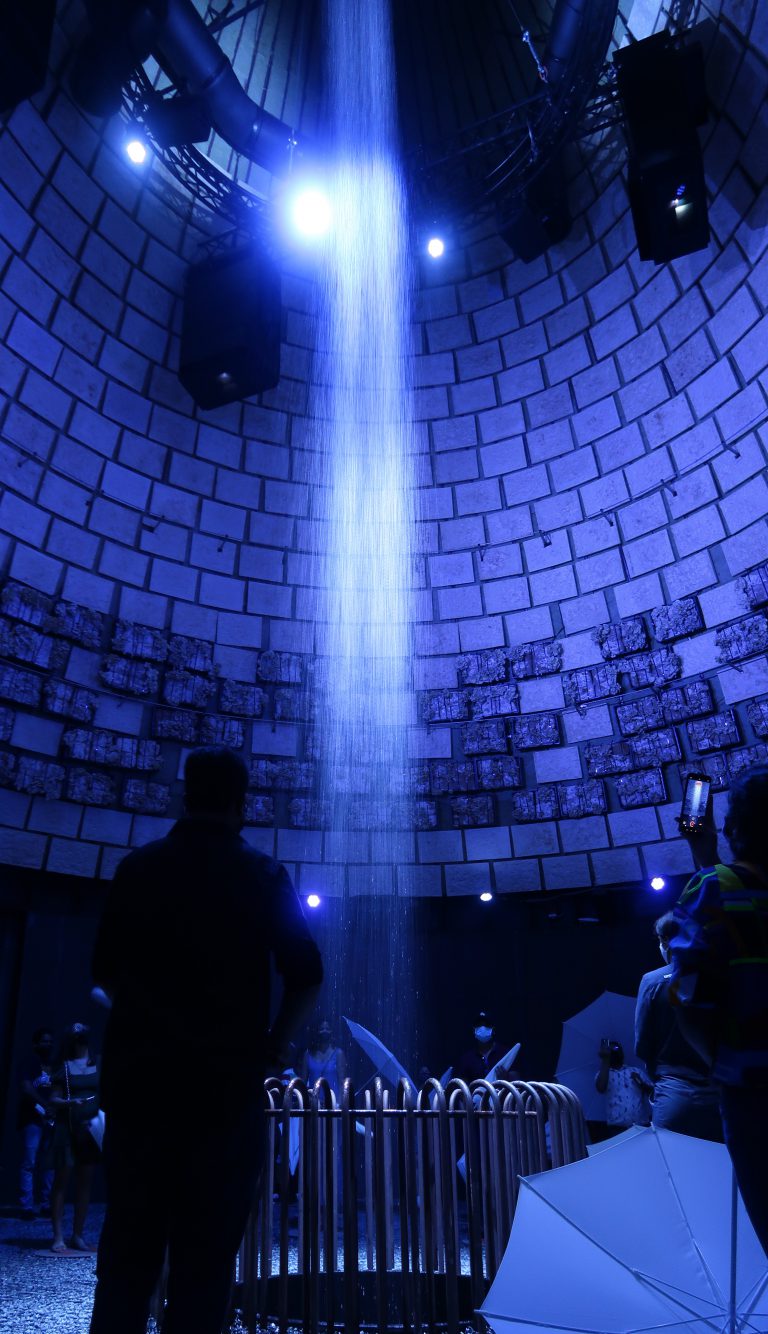
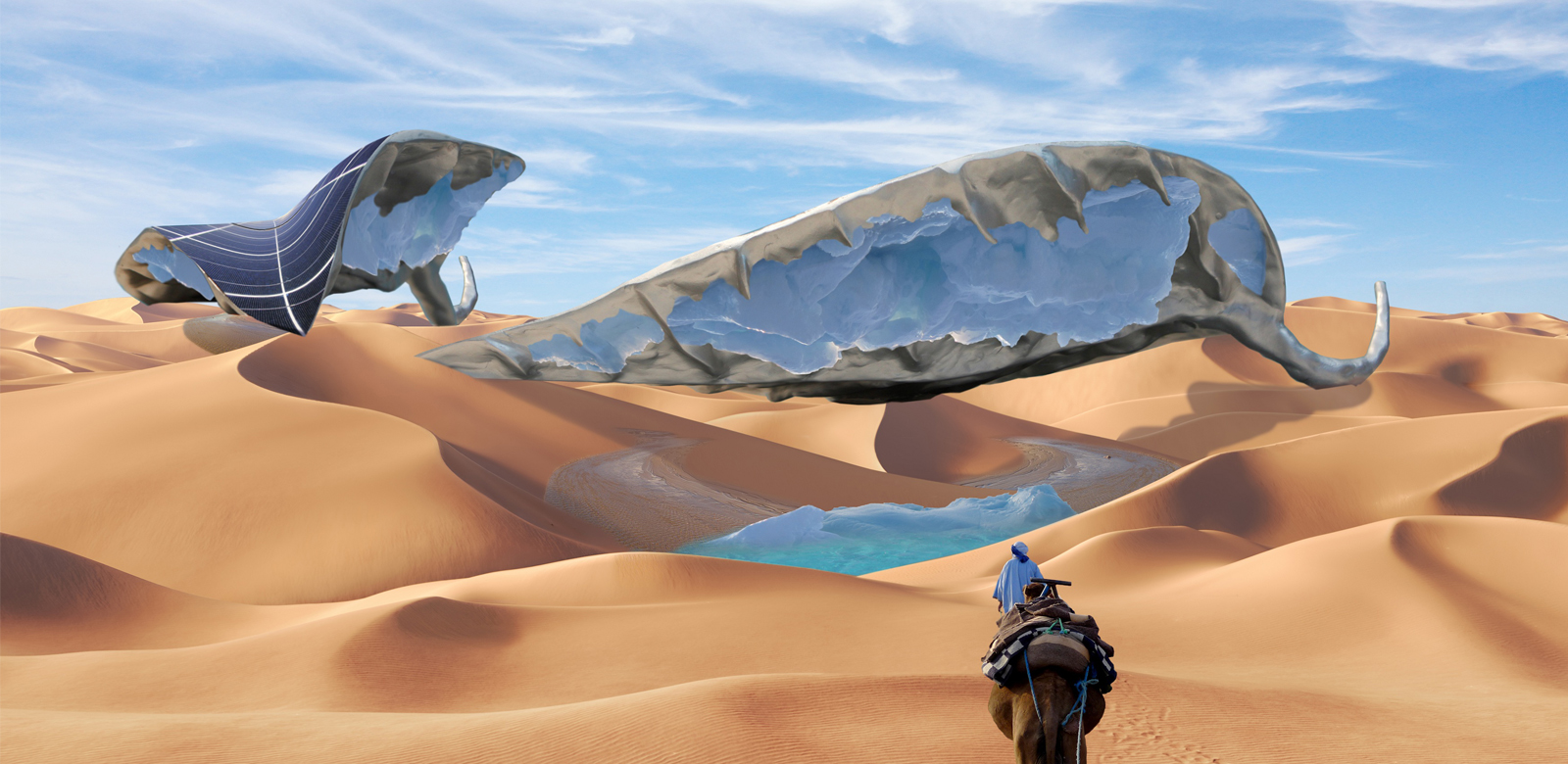
SunGlacier: From Art Project to life-giving water
SunGlacier began in 2010 as an art project to explore humanity’s ability to invent solutions for the far-reaching consequences of climate change. To set the bar high, artist Ap Verheggen investigated the feasibility of constructing an autonomous glacier -powered by solar energy- in a dry and hot desert. Hence the name “SunGlacier.” However, as water scarcity intensified, Ap decided to shift the focus from ice to water.
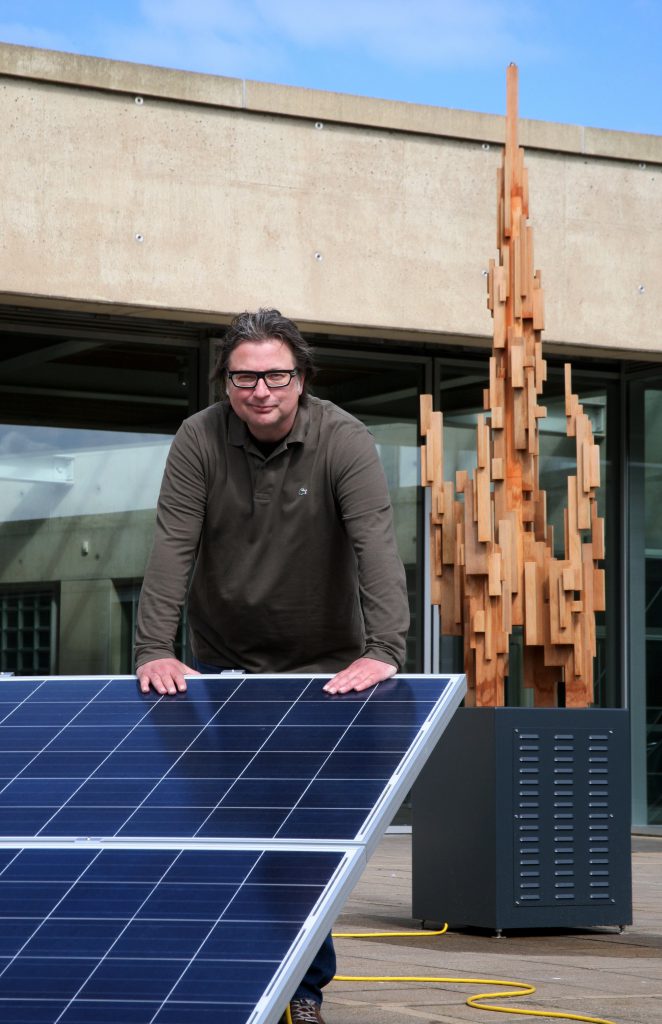
A groundbreaking water-from-air installation
In 2016, Ap presented an autonomous fountain at Museum Beelden aan Zee, likely the world’s first off-grid water-from-air installation powered entirely by solar energy. The artwork harvested water from the air, and once the reservoir was full, it sprayed upwards from the top. The exhibition was a resounding success, garnering attention even from The New York Times. The installation also marked the involvement of technician Peter van Geloven in the SunGlacier project.
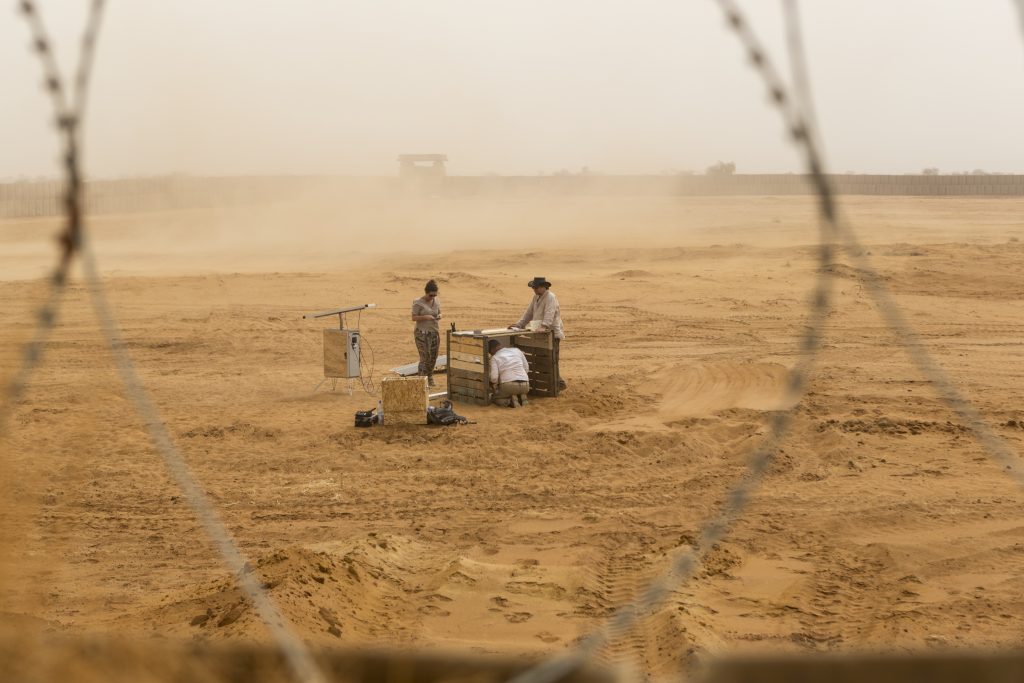
SunGlacier put to the test in the harsh climate in Mali
In 2017, Team SunGlacier was invited to test its water-from-air technology in Mali. With many conflicts arising from water scarcity, the UN peacekeeping operation explored the possibility if new technologies could contribute to maintaining peace or even prevent new conflicts. However, the extreme heat and aridity of Mali’s summer proved too challenging for existing dehumidification technologies. The bar had to be raised to make this solution a viable success. With the invention of the Growing Waterfall Technology we succeeded to find an answer for the condensation of humidity in world’s most extreme conditions.
Sunglacier Project
The SunGlacier Project started in 2010 as an Art Project and is still operational. In 2018, a separate company was founded: SunGlacier Technologies B.V., which develops and produces devices for efficient water extraction from air.